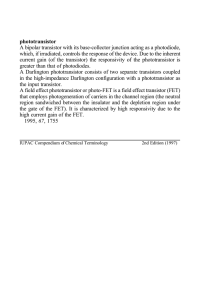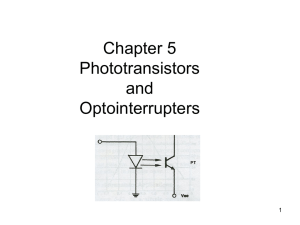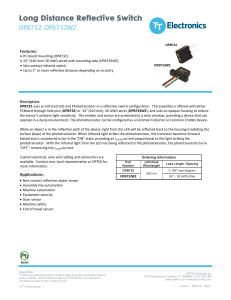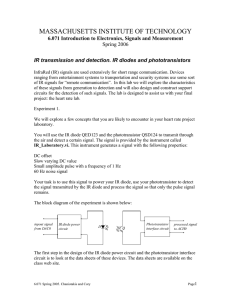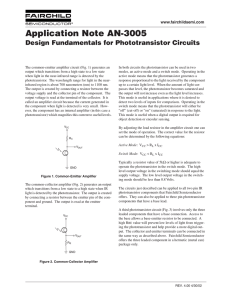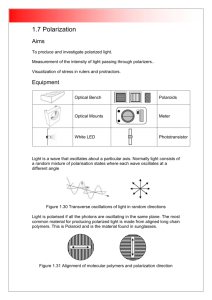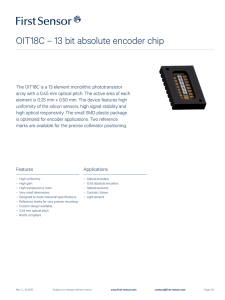Workshop 5 — Servos and ... Monday, January 10, and Tuesday, ...
advertisement
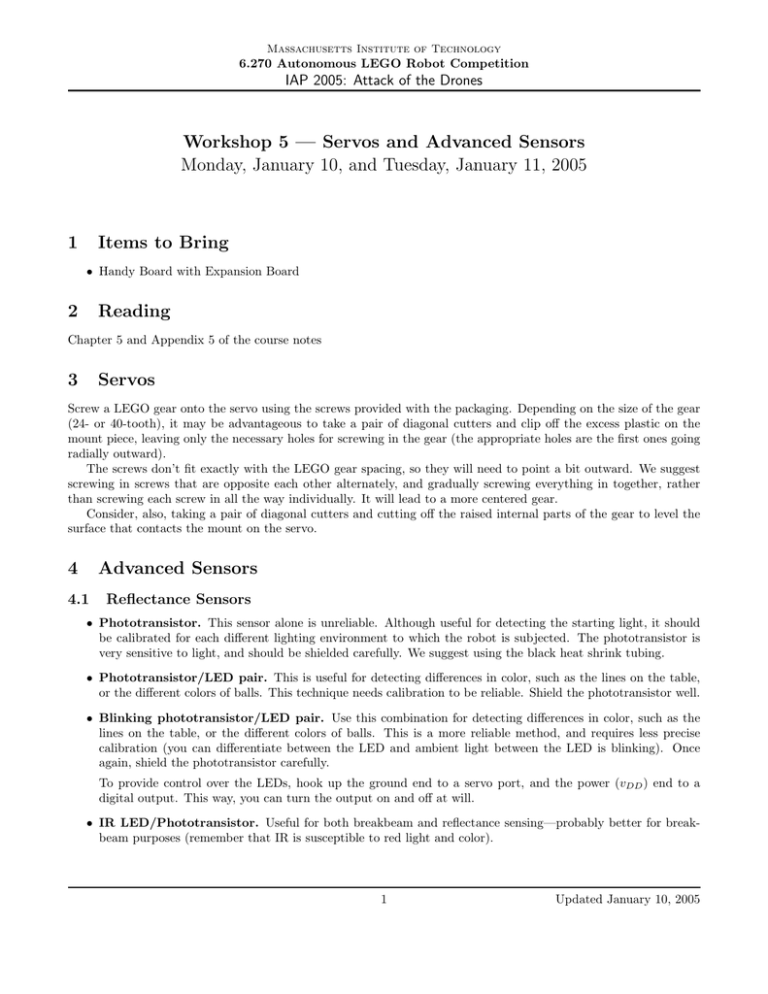
Massachusetts Institute of Technology 6.270 Autonomous LEGO Robot Competition IAP 2005: Attack of the Drones Workshop 5 — Servos and Advanced Sensors Monday, January 10, and Tuesday, January 11, 2005 1 Items to Bring • Handy Board with Expansion Board 2 Reading Chapter 5 and Appendix 5 of the course notes 3 Servos Screw a LEGO gear onto the servo using the screws provided with the packaging. Depending on the size of the gear (24­ or 40­tooth), it may be advantageous to take a pair of diagonal cutters and clip off the excess plastic on the mount piece, leaving only the necessary holes for screwing in the gear (the appropriate holes are the first ones going radially outward). The screws don’t fit exactly with the LEGO gear spacing, so they will need to point a bit outward. We suggest screwing in screws that are opposite each other alternately, and gradually screwing everything in together, rather than screwing each screw in all the way individually. It will lead to a more centered gear. Consider, also, taking a pair of diagonal cutters and cutting off the raised internal parts of the gear to level the surface that contacts the mount on the servo. 4 Advanced Sensors 4.1 Reflectance Sensors • Phototransistor. This sensor alone is unreliable. Although useful for detecting the starting light, it should be calibrated for each different lighting environment to which the robot is subjected. The phototransistor is very sensitive to light, and should be shielded carefully. We suggest using the black heat shrink tubing. • Phototransistor/LED pair. This is useful for detecting differences in color, such as the lines on the table, or the different colors of balls. This technique needs calibration to be reliable. Shield the phototransistor well. • Blinking phototransistor/LED pair. Use this combination for detecting differences in color, such as the lines on the table, or the different colors of balls. This is a more reliable method, and requires less precise calibration (you can differentiate between the LED and ambient light between the LED is blinking). Once again, shield the phototransistor carefully. To provide control over the LEDs, hook up the ground end to a servo port, and the power (vDD ) end to a digital output. This way, you can turn the output on and off at will. • IR LED/Phototransistor. Useful for both breakbeam and reflectance sensing—probably better for break­ beam purposes (remember that IR is susceptible to red light and color). 1 Updated January 10, 2005 Massachusetts Institute of Technology 6.270 Autonomous LEGO Robot Competition IAP 2005: Attack of the Drones 5 Activity This activity will help your robot orient correctly and dependably. Wire up a phototransistor and an LED to header so that you can connect it to your Handyboard. (As a note, when using multiple LEDS, you will need to use a FET. See a TA or organizer for more details, but don’t worry about it for this activity.) Write a simple piece of code for the Handyboard that will take readings from the phototransistor. Make sure that your phototransistor is properly shielded. If you missed the part in lecture that explained this, basically you want to use opaque material to shield the sensor so that ambient light and other stray light will not affect your sensor. Using the LED for illumination, take readings with the phototransistor on both the dark and light areas of the table. See what angle you have to hold the sensor at for the best readings. Does the angle at which the LED hits the table surface affect the reading? How close to the table does your sensor need to be? Now try doing some readings without the LED, and also with varying light conditions. Try shining a flashlight on the table or shading the table with your hand. What difference does it make? This is a fairly simple activity, but these are all considerations you need to make when attaching sensors to your robot, and also when programming thresholds for what your robot thinks is a dark color and a light color. Lighting conditions in lab won’t be the same as in Kresge Auditorium, so be careful. 2 Updated January 10, 2005
